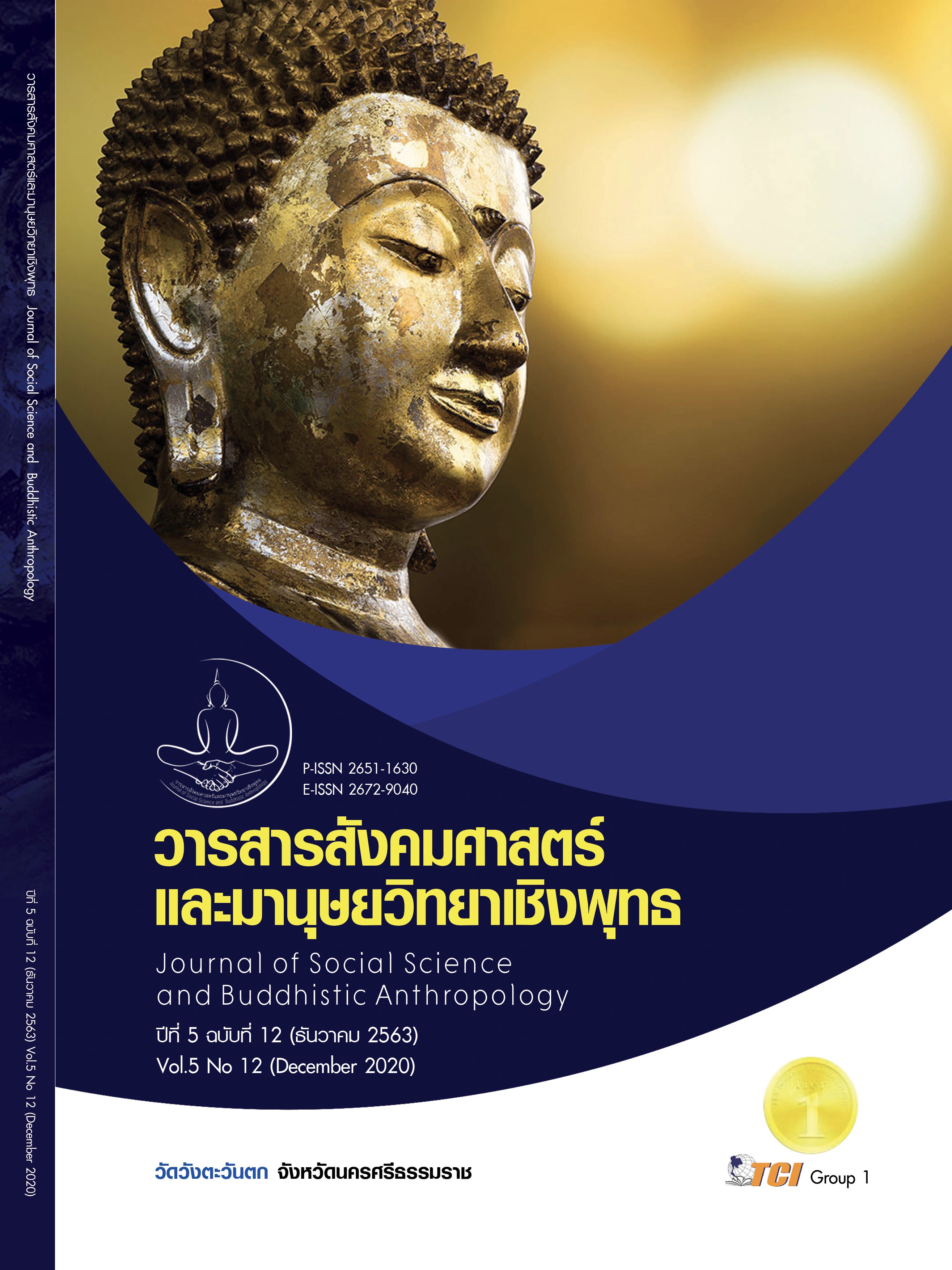THE CREATION RICE OF LAND BY USED IN MIXED MEDIA ARTS
Keywords:
Local Arts and Culture, Installation Arts on The Rice Fields, The Creation by Mixedmedia ArtsAbstract
The Objectives of this research article were to study the farmers’s farming information, creative and disseminating art works on the rice fields in Sawaichik Subdistrict, Buriram Province. And for the society to see the value of Buriram farmers and all local farmers in Thailand. This qualitative research and used tool collecting data in documents about the farmer’s farming, Thai farmer’s way of life, Theories of contemporary art. This research creating work of artis Rice of Land by using the creative process of seed sculpture Rice mixed media techniques. And installation arts exhibition, from locally available materials and with the participation of the community. The size changes according to the suitability of the area on the rice fields in Sawaichik Subdistrict, Mueang District, Buriram Province. Data was analyzed descriptive using results from processing of documents and the Aesthetic concept. The findings of the research revealed the following a rural social phenomenon in Sawaichik Subdistrict, Mueang District, Buriram Province. Overall, the environment and farming for living Farmer's way of life is a learning center for arts, culture and traditions. Faith that firmly connects farmers' ties. The rice grown from rice fields in Buriram province has special characteristics that are different from other rice fields. Because the rice fields are caused by volcanic deposits before thousands years ago. When lava decays a fertile soil. There are important nutrient minerals that make rice grow well. Human beings around the world consume rice as food And the farmers are growing for living. The creation Rice of Land is reflected in the concept and expressing to the public the value of the farmers with grace to human begins around the world. This creative work is a way to create modern art with a community audience as part of the complete work. By the creator to develop variety continuous independently
References
กนกพร รัตนสุธีระกุล. (2557). การเปลี่ยนแปลงวิถีการผลิตของสังคมชาวนาลุ่มน้ำชี กรณีศึกษา บ้านหนองผือ ต.หนองบัว อ.โกสุมพิสัย จ.มหาสารคาม. วิทยาสารเกษตรศาสตร์ สาขาสังคมศาสตร์ , 35(3), 447-459.
กำจร สุนทรพงษ์ศรี. (2559). สุนทรียศาสตร์. (พิมพ์ครั้งที่ 3). กรุงเทพมหานคร: จุฬาลงกรณ์มหาวิทยาลัย.
ชลูด นิ่มเสมอ. (2553). องค์ประกอบของศิลปะ. (พิมพ์ครั้งที่ 7). กรุงเทพมหานคร: อมรินทร์.
ชิน อยู่ดี. (2531). ข้าวจากหลักฐานโบราณคดีในไทย: ข้าวไพร่ - ข้าวเจ้าของชาวสยาม. กรุงเทพมหานคร: ศิลปวัฒนธรรม.
ยศ สันตสมบัติ. (2544). มนุษย์กับวัฒนธรรม. (พิมพ์ครั้งที่ 3). กรุงเทพมหานคร: มหาวิทยาลัยธรรมศาสตร์.
วนิดา ขำเขียว. (2543). สุนทรียศาสตร์. กรุงเทพมหานคร: พรานนก.
วิจิตร อภิชาตเกรียงไกร. (2560). การสร้างสรรค์ผลงานโครงการสาธารณศิลป์เพื่อนิเวศสุนทรีย์ในวิถีวัฒนธรรมข้าวไทย. ใน ดุษฎีนิพนธ์ปรัชญาดุษฎีบัณฑิต สาขาวิชาทัศนศิลป์. มหาวิทยาลัยศิลปากร.
ศิริพรรณ สุทธินนท์. (2560). วัฒนธรรมข้าว: กระบวนการผลิตและการบริโภคตามวิถีพุทธ. ใน วิทยานิพนธ์พุทธศาสตรมหาบัณฑิต สาขาการบริหารจัดการคณะสงฆ์. มหาวิทยาลัยมหาจุฬาลงกรณ์ราชวิทยาลัย.
สมาคมผู้ส่งออกข้าวไทย. (2561). สถานการณ์การส่งออกข้าวไทยและแนวโน้มทิศทางการส่งออกข้าวไทยปี 2561. เรียกใช้เมื่อ 23 ตุลาคม 2562 จาก http://.www.thaiceexporters.or.th/press.
สรเชต วรคามวิชัย. (2544). วัฒนธรรม พัฒนาการทางประวัติศาสตร์เอกลักษณ์และภูมิปัญญา จังหวัดบุรีรัมย์. กรุงเทพมหานคร: กระทรวงศึกษาธิการ.
สรา สุขการณ์. (2556). ข้าวสายใยแห่งความผูกพัน. ใน วิทยานิพนธ์ศิลปกรรมศาสตรบัณฑิต สาขาทัศนศิลป์. มหาวิทยาลัยพระจอมเกล้าเจ้าคุณทหารลาดกระบัง.
สำนักงานจังหวัดบุรีรัมย์. (2562). ข้อมูลพื้นฐานจังหวัดบุรีรัมย์. เรียกใช้เมื่อ 23 ตุลาคม 2562 จาก http://www.buriram.go.th/buriram
สุจิตต์ วงษ์เทศ. (2550). แผนที่ประวัติศาสตร์ (สยาม) ประเทศไทย. กรุงเทพมหานคร: โรงพิมพ์มติชน.
สุธี คุณาวิชยานนท์. (2561). ศิลปะสมัยใหม่และร่วมสมัย: ตะวันตกและไทย. กรุงเทพมหานคร: ทวีวัฒน์การพิมพ์.
Phongphit and Bennoun. (1988). Reflections on Thai Culture. Bangkok: Siam Society.






